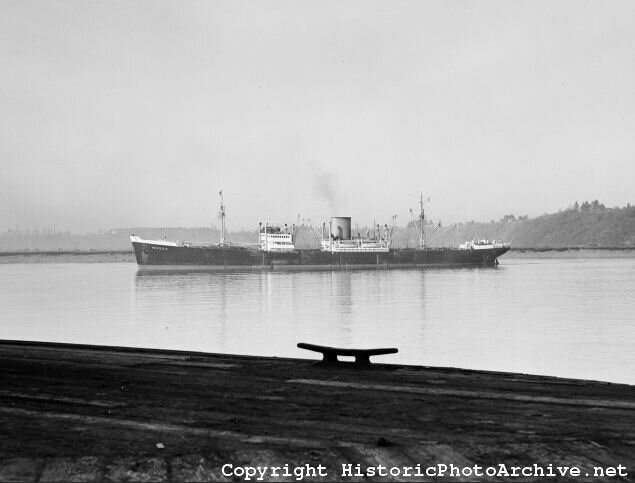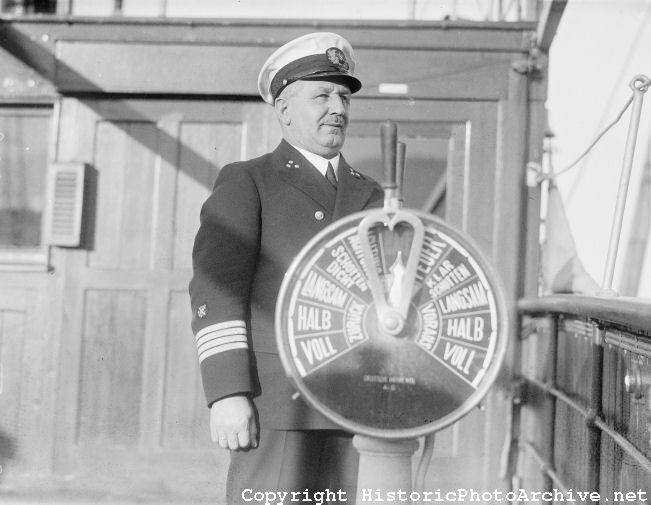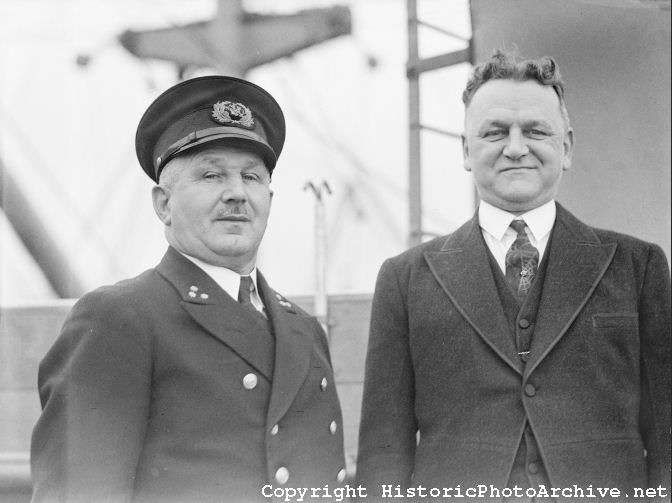Before this story is told fruitrunner would like to say thank you to the author Mr Barney-Athanasius Blalock for giving his permission for this blog to be used today.
The Fruit Runner, Weser

The M. V. Weser, of the Norddeutscher Lloyd shipping company, was fast, having an average cruising speed of 19 ? knots. In spite of its working ship, bulldog looks, it was outfitted in a luxurious style in its interior; for unlike most freighters today, there were 21 of the “largest and best-furnished passenger cabins seen in this harbor.” At least this was the report given by visitors to the ship in the entourage on Armistice day in 1934. It seems that these cabins were not difficult to fill with passengers; the ship was already booked weeks before arriving on its “fruit run,” taking the apples of Hood River and the pears of Yakima to the green grocers of Europe.

Grandfatherly old Captain Franz Voigt appears to have been a friendly fellow, but maybe a little reserved. It was Armistice day, after all, not the best day to be a German in America. The agent referred to this as the North German Lloyd “Christmas Ship” that would arrive in Europe with passengers two weeks before Christmas. I feel a twinge of envy tugging at my heart?to be one of those pampered few?the Weser passengers.
That was 1934. The Weser was here and back quite often, on the “fruit run,” in the years following. The photos in this blog post were taken in 1936, and the gentleman with Captain Voigt is the German consul, Robert G. Cloustermann, who appears in town after the war as a maritime lawyer. This ship had been on the “fruit run” for a few years. Originally, after it was completed in 1929, it was named Sud Americano for A/S Linea Sud Americana Lines. Later it was sold to a firm in Bremen and named, Yakima Star, a name fitting to a “fruit runner.” The vessel was lengthened in 1934, and renamed Weser for Norddeutscher Lloyd, where it kept on supplying apples, pears, and the like to European markets.
In 1938, when the M.V. Weser made its “fruit run,” the papers referred to it as the “Nazi ship, Weser.” That is the last Portland saw of the Weser.
After nightfall, on September 25, 1940 the Canadian ship H.M.C.S. Prince Robert spotted the Weser as it was heading out of the harbor of Manzinillo, in southwestern Mexico. The Canadian ship was part of the blockade in force on Mexican ports. The Canadians were close to the shore and in a perfect position to surprise the German vessel before the crew had a chance to scuttle. The Weser was thought to have been turned into a supply ship for the German battleship, Orion. During this raid the German crew was taken captive, but smiling Captain Voigt was not aboard. The next month Captain Voigt was spotted among the passengers of the Japanese vessel, Rakuyo Maru, leaving Mazanillo for Japan.
The Weser was taken by a small crew of Canadians to Esquimalt in British Columbia where it was renamed the Vancouver Island. On the night of October 15, 1941 in the middle of the North Atlantic, the unescorted vessel was torpedoed by a U-boat, fore and aft. The ship went down fast; there were no survivors.

